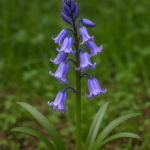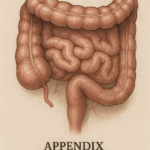
Yeast is a fascinating and adaptable bacterium that has been utilized for thousands of years in the creation of bread and alcoholic drinks. The single-celled yeast belongs to the kingdom Fungi, and there are over 500 species and hundreds of variants that may be found in soil, sweet liquids, and on the surface of plants and animals. Yeast has several uses in biotechnology aside from its position in the food and beverage sector. Here are some interesting and evergreen yeast facts that you might find interesting.
Size and composition: A single yeast cell has a diameter of 3 to 5 microns and visible colonies of yeast can be composed of over one million cells. A package of yeast used for cooking contains billions of cells. Yeast contains a nucleus, like other eukaryotic organisms, which holds its DNA, as well as mitochondria, which are responsible for energy production.
Yeast genetics: 25% of yeast genes can be found in the human genome, making yeast a valuable model organism in many laboratory studies.
History of yeast discovery: Anton van Leeuwenhoek first saw yeast cells under the microscope in 1680, but he failed to identify them as living entities. It wasn’t until 1857 when Louis Pasteur discovered that yeast cells were responsible for brewing beer.
Yeast in food and beverage production: Yeast converts sugar from a liquid medium into alcohol and carbon dioxide, and contributes to the aroma of beer and wine. It has been used for thousands of years in the production of beer and wine, and yeast can change the taste and smell of beer in hundreds of ways by producing over 600 different compounds.
Bread and dough production: Yeast is also an essential ingredient in the production of bread and various dough. In fact, ancient Romans accidentally discovered yeast by observing that dough left in the sun could be “revived” with the addition of sugar.
Brewer’s yeast as a food supplement: Brewer’s yeast is often used as a food supplement due to its high content of B-group vitamins. Additionally, brewer’s yeast is also used as a model organism in many laboratories around the world, and its molecular pathways and genetics are crucial in understanding the aging of eukaryotic cells.
Yeast in biotechnology: Some species of yeast can induce various diseases in humans and animals, such as Candida albicans, which can cause infections in the mouth and gastrointestinal tract. Yeast is also frequently used in the biofuel industry for the production of ethanol and for the degradation of oils, explosive materials, hydrocarbons, and fatty acids in contaminated areas.
Yeast reproduction: Most species of yeast reproduce asexually through asymmetric division, where yeast forms buds, small protrusions on one side of the cell that grow, mature, and eventually detach from the mother cell. In some species, yeast reproduces through fission, where the mother cell divides into two equal daughter cells. The average lifespan of a yeast cell is a few days.
Yeast is a fascinating and diverse microorganism with a rich history of use in food and beverage production, biotechnology, and laboratory studies. Its size, genetics, and reproduction make yeast an excellent model organism for scientific research and development.










I really enjoyed reading your blog post! Your writing style is engaging and your perspective is fresh and insightful. Your ideas have given me a lot to think about and I look forward to reading more of your work in the future. Keep up the great work!